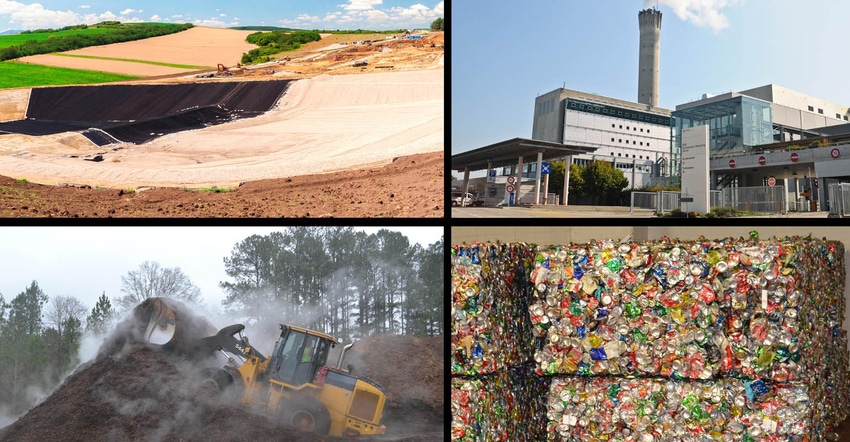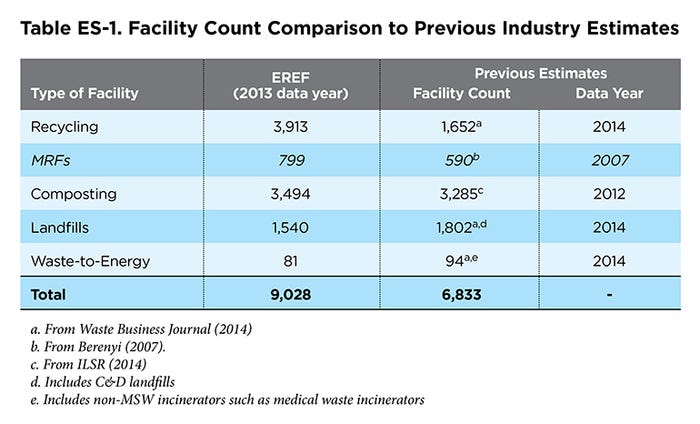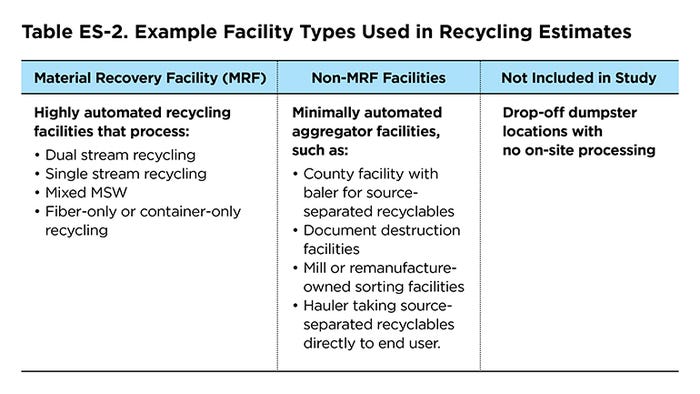The report includes a complete list of the 9,028 facilities identified as managing municipal solid waste (MSW) in 2010 and/or in 2013.

The Environmental Research & Education Foundation (EREF) has released its new “MSW Management Facilities in the U.S.” report, which includes a complete list of the 9,028 facilities identified as managing municipal solid waste (MSW) in 2010 and/or in 2013. The information featured in the report was gathered as part of EREF’s “Municipal Solid Waste Management in the U.S.: 2010 & 2013” study, which is a bottom-up accounting of the MSW picture in the U.S.
“Facility-specific data was the key attribute and motivator of the methodology that was used in EREF’s Municipal Solid Waste Management in the U.S.: 2010 & 2013 study, and we saw a great opportunity to use the data from that study to create an accurate listing of facilities that were managing MSW in 2010 and/or in 2013 and their infrastructures,” says Debra Kantner, data and policy program manager at EREF.
Data used in the report was aggregated into state, regional and national statistics, totaling 342.6 million tons of MSW managed in 2010 and 347.0 million tons of MSW in 2013.

The facility lists in the report, which are sorted by landfill facilities, waste-to-energy (WTE) facilities, composting facilities, recycling facilities/materials recovery facilities (MRFs) and recycling facilities/non-MRFs, provide the following information for each of the 9,028 facilities: state, facility name, owner/operator name, city, ownership (public or private), operator (WTE only), facility type, MSW materials accepted and non-MSW materials accepted (composting only).
The report includes information on 1,615 landfills, 86 WTE facilities, 3,514 composting facilities and 3,913 MRFs and non-MRFs.

While compiling and sorting the data for the report, there were a few surprise factors. The first surprise factor was ownership demographics. With landfills, for example, the number of facilities weighed heavily on the publically owned side, while the tonnage of those landfills weighed heavily on the privately owned side, comments Kantner.
Another surprising takeaway was the diversity of recycling facilities that fell into the non-MRF category. For example, in the State of Missouri, a lot of the infrastructure actually came from sheltered workshops that provide occupational training for areas with developmental issues. These facilities actually educate residents on how to bale material like cardboard and paper, states Kantner. Also, in many states, some scrap metal recycling facilities have modified operations to begin recycling plastic, glass and cardboard because there was a need for those types of facilities in their local area.
The new report can be used in two ways, according to Kantner. It can be used as a standalone report to understand the current infrastructure for MSW management, which is important as the industry moves forward with sustainable materials management. And it can also be used as a companion to the previously released study, providing clarity on the methodology and the backbone of the information that went into developing the analysis of MSW tonnage.
“No matter which way the report is used, it can help people understand where recovery pathways are and where investment is needed to recover more materials,” says Kantner.
The full report can be purchased online here.
About the Author(s)
You May Also Like




